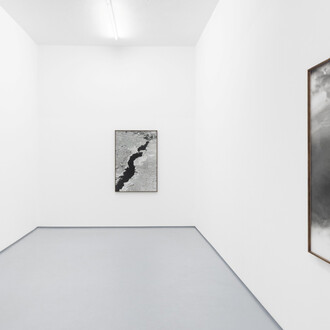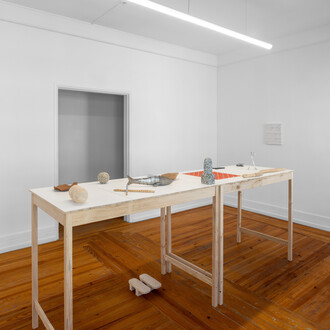Decoding codes, translating them, inventing them. Creating a new language. Giving new meaning to signs. Even if the signs change, are the messages the same? What remains after all is said and done? What lasts forever?
If there is one material that seems fragile and ephemeral, it is porcelain. Ductile and indelible, it is almost as old as humanity itself. In China, it was already being worked on in 1700 BC, coinciding with the invention of music and art, and it forms part of our story as a species. It tells our history.
The moment when China began to use cobalt blue, as Barreiro has done in these pieces, coincides with the establishment of proto-capitalism and, with it, worldwide exports. The 14th century marks the Ming dynasty and the conquest of the world. Europe copies this process, allowing itself to be colonised by the forms in order to make them its own, a transculturation that leads to identity. Blue on white became a European mass taste imported by the fabulous Portuguese navigators. They appropriated these codes, declining them through the azulejo. They embraced it as their own. The symbol changed, but not the code.
Copying, mimesis, repetition is the essence of our culture. Although the West seeks the utopia of the “unique and original” piece, China clings to the mutable and the process of drift, doing so through shanzai: adapting the copied until it becomes something else. Barreiro deconstructs this ontological framework by turning it on its head: the copy, the serial piece, which can be repeated infinitely, becomes a work of art. He takes traffic signs — arrows, triangles, mandatory rings, warning diagonals — and grafts them onto plaques and volumes worked in white paste. Cobalt oxide — the historic colour of Portugal, of tiles and Vista Alegre — appears in gradients that emerge from the relief: spikes, grooves and meshes that capture the pigment.
Qué fica?, the title of this exhibition, alludes to the transcendental in the everyday and questions the essence of the world. Heraclitus and Byung-Chul Han, in the end, are not so far apart. Their paths lead to common places, sister cosmographies, essences that remain in change.
Pablo Barreiro (Meaño, Pontevedra, 1982) is one of the key artists in the new production and experimentation of ceramics in its contemporary narrative. He explores seriality, repetition and the relationship between original and copy in art, endowing it with an anthropological and transcendental discourse.
(Text by Maria Marco, september de 2025)














